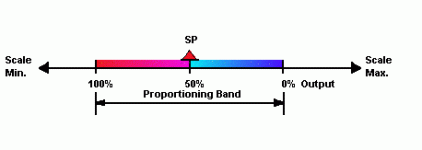unsaint32
Member
I am practicing temp controller setup with E5CN R2MTD 500. My parameter values are; Control type=PID, Control period=10 seconds, Proportional band=30, I=45, D=8. When the PV is at the SP, the output is ON for just a little over 1 second. I thought that the output will be on 50% of the control period when the PV is at the set point. Why am I not getting the output ON for 5 seconds? A gain issue? I don't know how to even set the gain value with E5CN.
Thanks.
Thanks.



